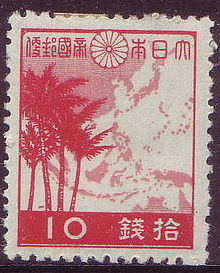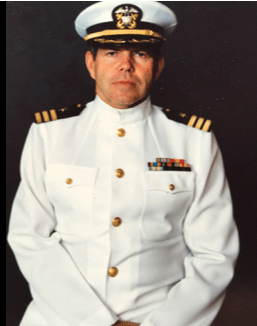Today’s Geopolitical Cold War Is Anchored in Monroe Doctrine
 The Monroe Doctrine was launched in 1823 by President James Monroe to warn transoceanic interventionists to stay out of the Americas or face military retaliation. Peace has been the dividend of de facto US management of North, Central, and South America.
The Monroe Doctrine was launched in 1823 by President James Monroe to warn transoceanic interventionists to stay out of the Americas or face military retaliation. Peace has been the dividend of de facto US management of North, Central, and South America.
In the next century both Russia and China decided that the same policy fitted their own “superpower” histories as well. Both control vast tracts of land and teeming populations. Both are Cold War adversaries of the US.
Eastward expansion by the Russians finally reached the Pacific Ocean, paralleling America’s westward Manifest Destiny. The very name Tsars or Czars derives from Caesar and the Roman Empire, which ended up unifying Western Europe.
World Wars I and II could also be seen as European civil wars, however, leaving Russia with a political advantage because of its size and military power. With the anti-communists soundly defeated in 1945, the Soviet Union and China assumed geographical leadership.
 Gone was Germany’s Fortress Europa and Japan’s Greater East Asia Co-Prosperity Sphere, both of which acknowledged a protectionism based on contiguous buffer zones. The Soviet Empire now extended west of the Iron Curtain with the establishment of pliable socialist governments in Western Europe, made even softer by liberally progressive policies.
Gone was Germany’s Fortress Europa and Japan’s Greater East Asia Co-Prosperity Sphere, both of which acknowledged a protectionism based on contiguous buffer zones. The Soviet Empire now extended west of the Iron Curtain with the establishment of pliable socialist governments in Western Europe, made even softer by liberally progressive policies.
The Cold War has been the name given to the power struggle between the US, Russia, and China. Both Russia and China have shed the negative baggage associated with hardcore communism. Even their symbolic color red has been discarded as they’ve reinvented themselves, now falsely foisted upon conservatives.
The USSR has disbanded, but Vladimir Putin has been busy reassembling the empire to thwart US plans for a NATO military presence on Russia’s own border. China has turned capitalist and now supplies the US with most of its manufactured goods. In the longer run, geography will steer the power struggle perhaps even more than technology. Logistics counts for a lot.
“The Cold War continues,” says retired US Navy Captain James A. Huff of Rapid City, South Dakota, an expert in naval intelligence who cut his teeth on Russian-American spying and surveillance activities spanning several continents near the end of the Soviet Era.
 Huff’s duty on aircraft carriers, submarines and P-3 Orion surveillance planes gave him a front-row seat to geopolitical intrigue that is the very stuff of Tom Clancy novels. He has watched the transition to P-8 Poseidon Cold War technology.
Huff’s duty on aircraft carriers, submarines and P-3 Orion surveillance planes gave him a front-row seat to geopolitical intrigue that is the very stuff of Tom Clancy novels. He has watched the transition to P-8 Poseidon Cold War technology.
China’s current militarization of the South China Sea in the Spratly and Paracel Islands comes as no surprise to him. Sand dredged from around submerged atolls creates weaponized new islands with deep-sea harbors, strategically reminiscent of Iwo Jima as a fighting platform.
You are invited to hear James Huff speak on Saturday, June 11 at Ellsworth Air Force Base’s South Dakota Air and Space Museum, starting at 9 am, a free event sponsored by the Black Hills Veterans Writing Group.
 The Monroe Doctrine was launched in 1823 by President James Monroe to warn transoceanic interventionists to stay out of the Americas or face military retaliation. Peace has been the dividend of de facto US management of North, Central, and South America.
The Monroe Doctrine was launched in 1823 by President James Monroe to warn transoceanic interventionists to stay out of the Americas or face military retaliation. Peace has been the dividend of de facto US management of North, Central, and South America. Gone was Germany’s Fortress Europa and Japan’s Greater East Asia Co-Prosperity Sphere, both of which acknowledged a protectionism based on contiguous buffer zones. The Soviet Empire now extended west of the Iron Curtain with the establishment of pliable socialist governments in Western Europe, made even softer by liberally progressive policies.
Gone was Germany’s Fortress Europa and Japan’s Greater East Asia Co-Prosperity Sphere, both of which acknowledged a protectionism based on contiguous buffer zones. The Soviet Empire now extended west of the Iron Curtain with the establishment of pliable socialist governments in Western Europe, made even softer by liberally progressive policies.  Huff’s duty on aircraft carriers, submarines and P-3 Orion surveillance planes gave him a front-row seat to geopolitical intrigue that is the very stuff of Tom Clancy novels. He has watched the transition to P-8 Poseidon Cold War technology.
Huff’s duty on aircraft carriers, submarines and P-3 Orion surveillance planes gave him a front-row seat to geopolitical intrigue that is the very stuff of Tom Clancy novels. He has watched the transition to P-8 Poseidon Cold War technology.